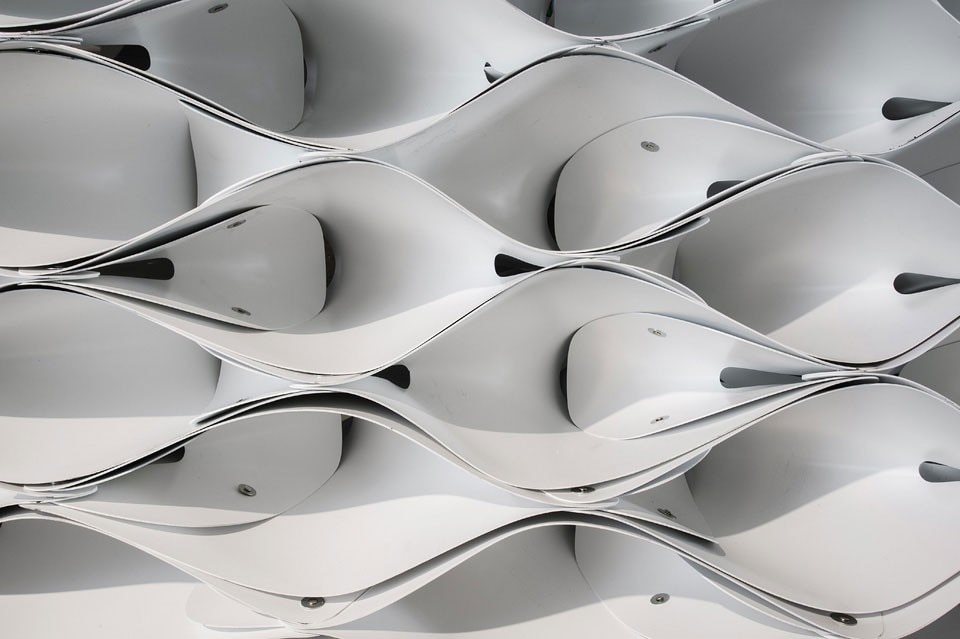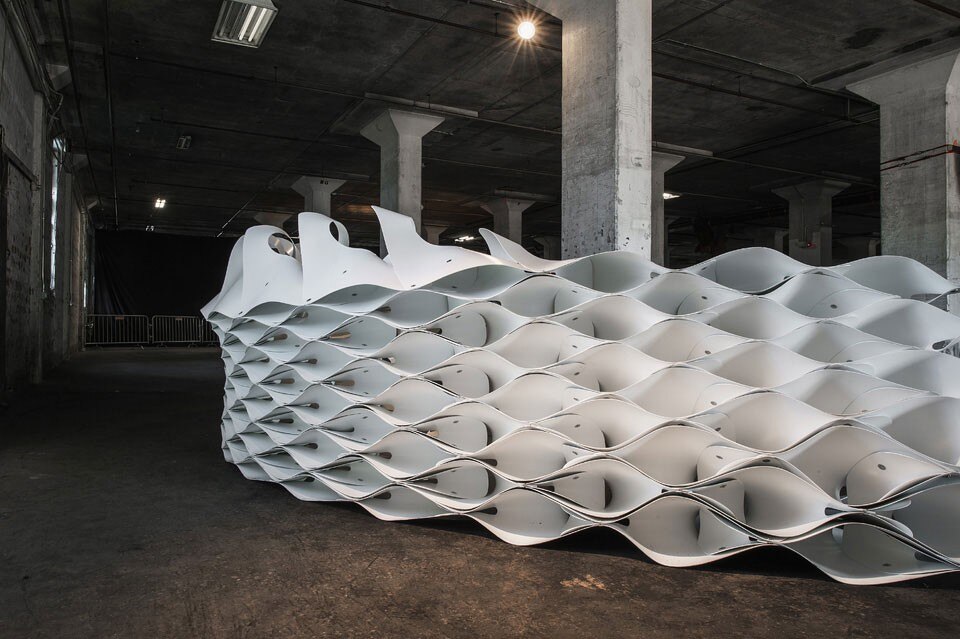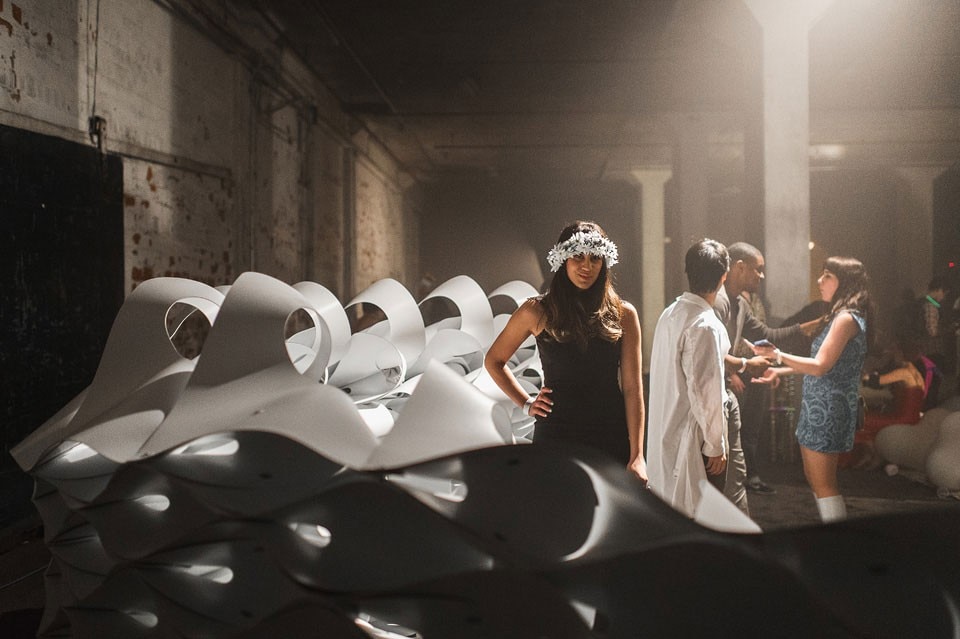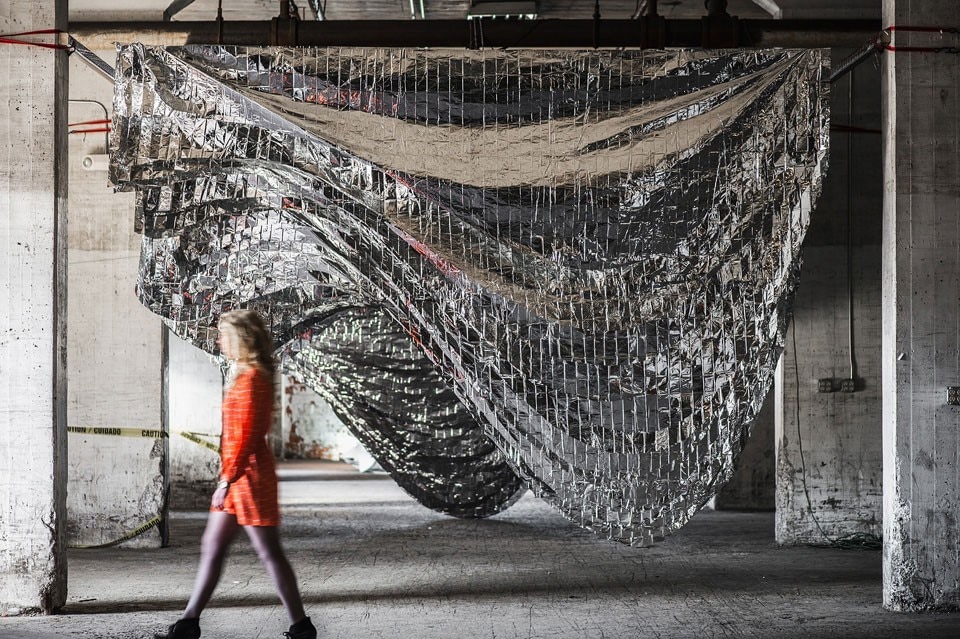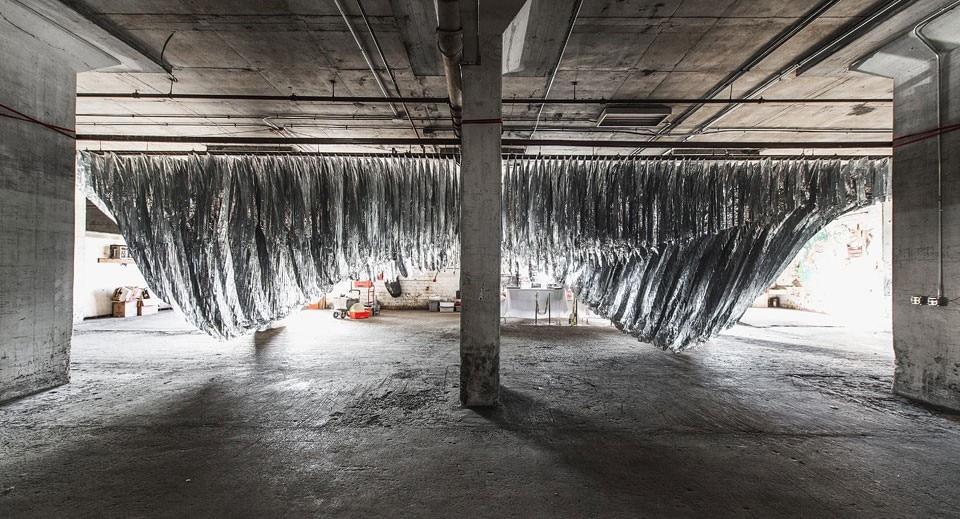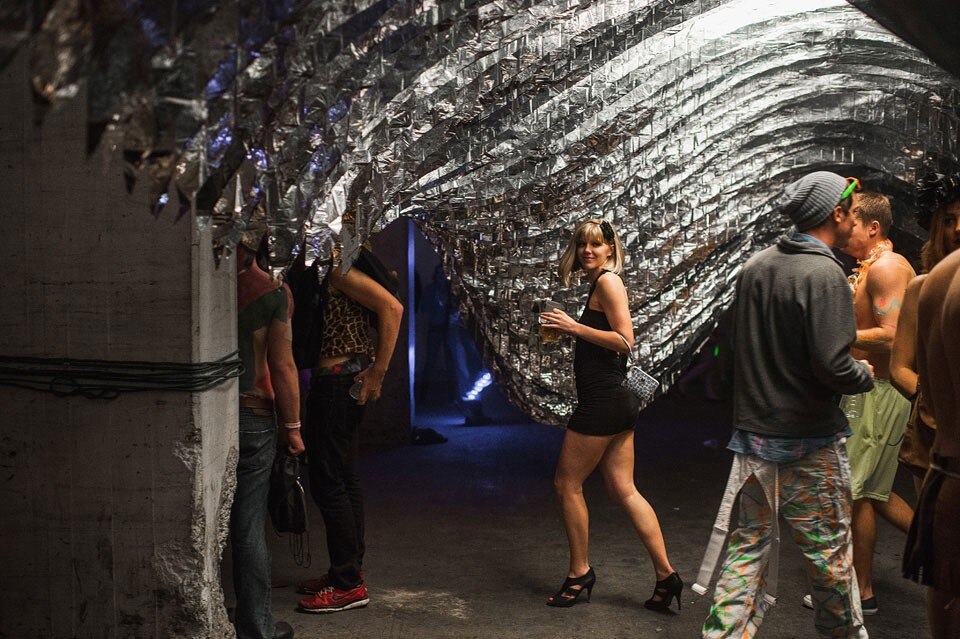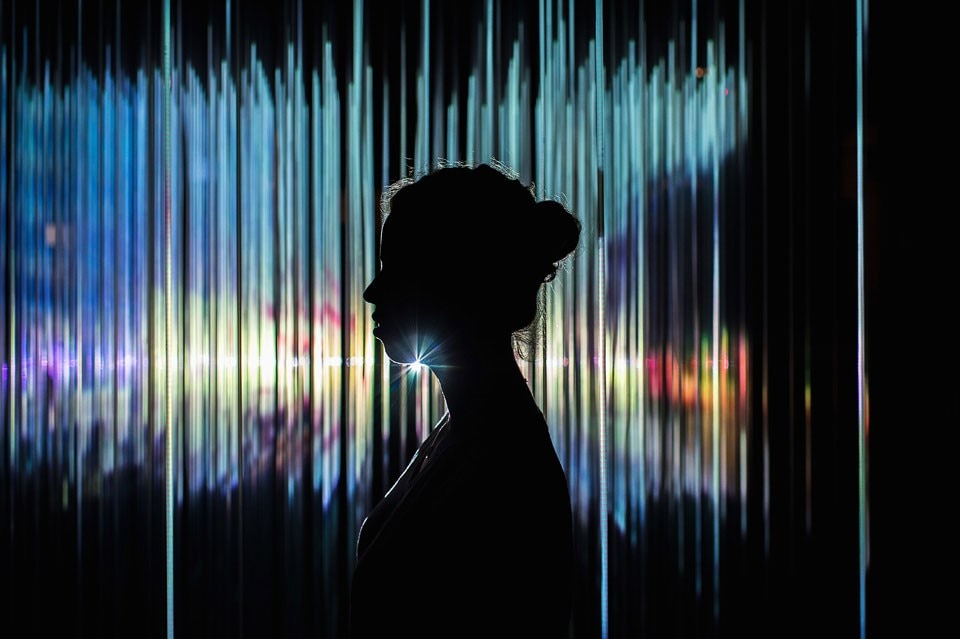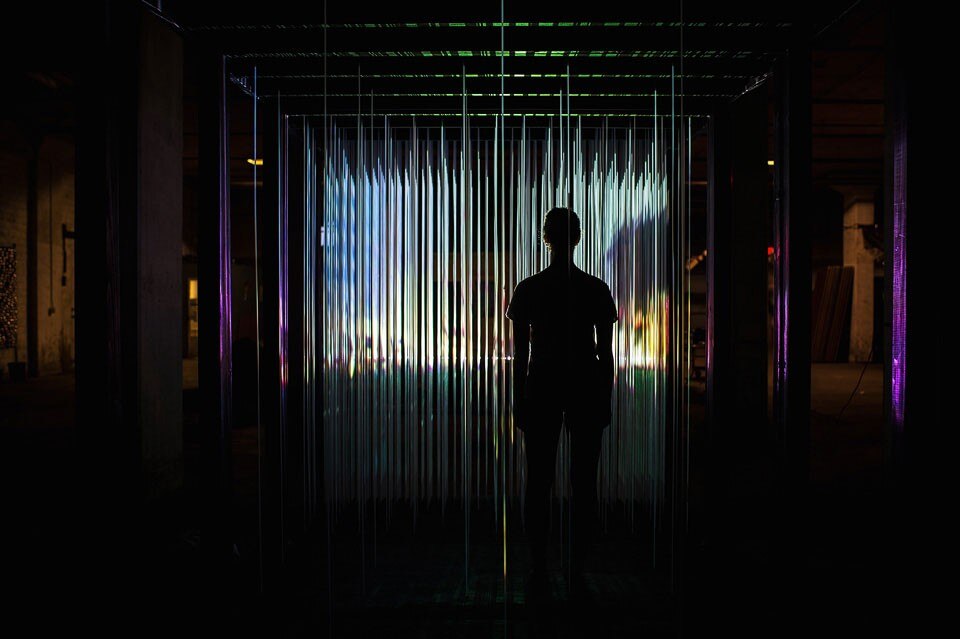
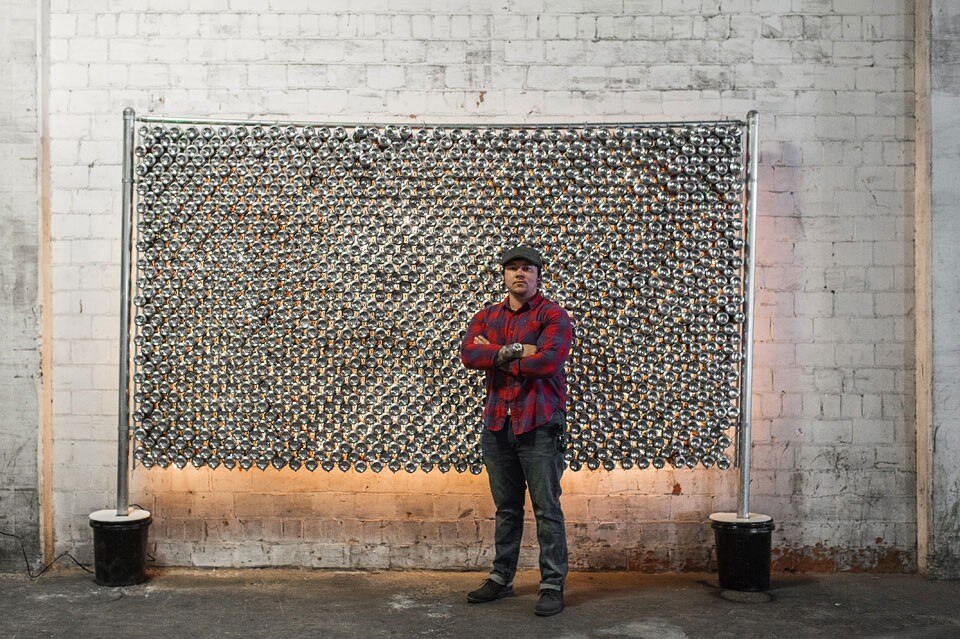
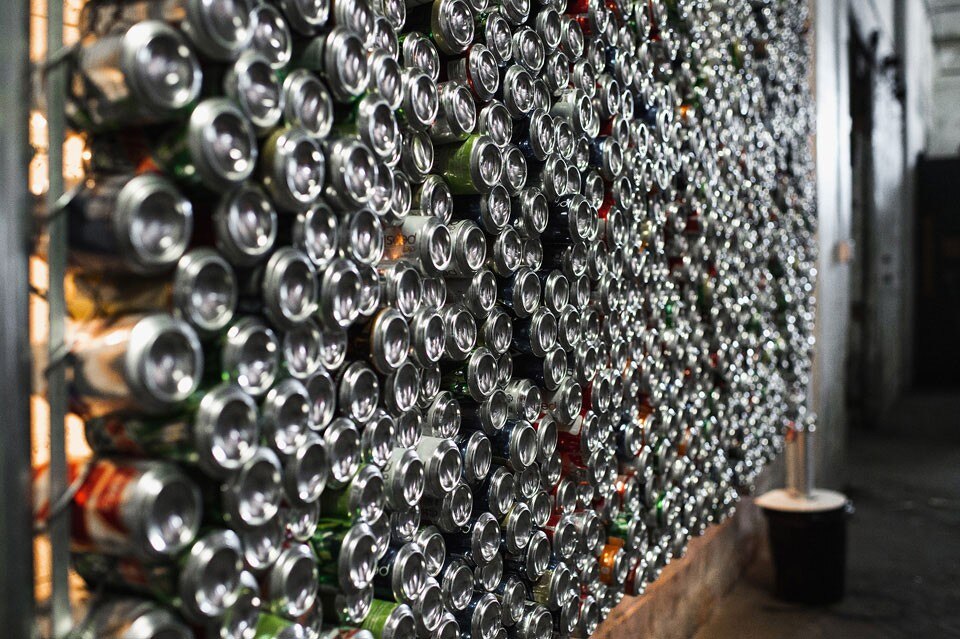
Chico Nichols created an installation using high-gauge tubing that was arranged vertically in different densities, creating a barrier between a more private space and the public circulation paths. This field became a dividing element as well as a combining element; users on both sides of the installation could see videos that were projected onto the tubes. This provided different visual experiences for each set of users, while also providing a space for partiers to dance inside of, breaking down the distinction between stage and spectator. Another installation made a space out of a series of emergency blankets. Hung vertically, these metallic blankets looked very heavy, but swayed in the breeze like the lightest fabric ever made (which they might be). Another set of students used an Atwoodian projection technique to make a faceted surface come alive with animated light.
